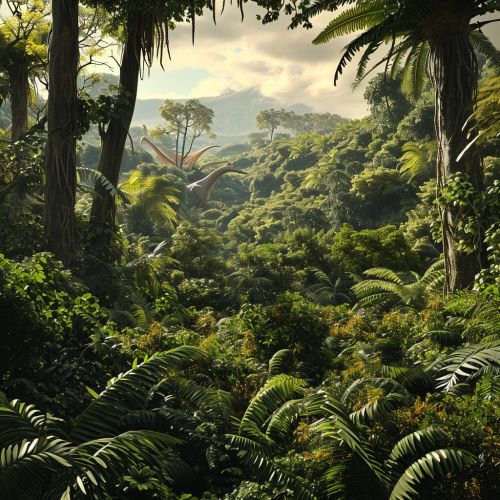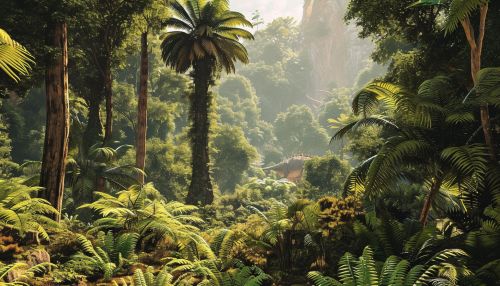Jurassic Period
Overview
The Jurassic is a geological period that spanned from about 201.3 million years ago (mya) to 145 mya. It is the second segment of the Mesozoic era, following the Triassic and preceding the Cretaceous. The Jurassic constitutes about 56 million years, making it the longest period of the Mesozoic.


Geology
The Jurassic was a time of significant geological activity, with the supercontinent Pangaea beginning to rift into two landmasses: Laurasia to the north and Gondwana to the south. This rifting was accompanied by volcanic activity and the creation of the Atlantic.
Climate
The climate during the Jurassic Period was generally warm and humid, with no evidence of glaciation. This is attributed to the configuration of the continents, which allowed for the free circulation of equatorial currents, leading to a greenhouse effect.
Flora
The Jurassic Period saw a diversification of plant life. The dominant plants were gymnosperms, including conifers, cycads, ginkgoes, and ferns. The first true flowering plants, or angiosperms, appeared near the end of the period.
Fauna
The Jurassic Period is perhaps most famous for its dinosaurs. It was a time of great diversification among the dinosaurs, with the appearance of many of the most well-known types, including the large herbivores like Brachiosaurus and Diplodocus, and carnivores like Allosaurus. The first birds, including Archaeopteryx, also appeared during the Jurassic.
End of the Jurassic
The Jurassic Period ended with a mass extinction event, known as the Jurassic-Cretaceous extinction. While not as devastating as the later Cretaceous-Paleogene extinction that wiped out the dinosaurs, it nonetheless had a significant impact on marine life.
